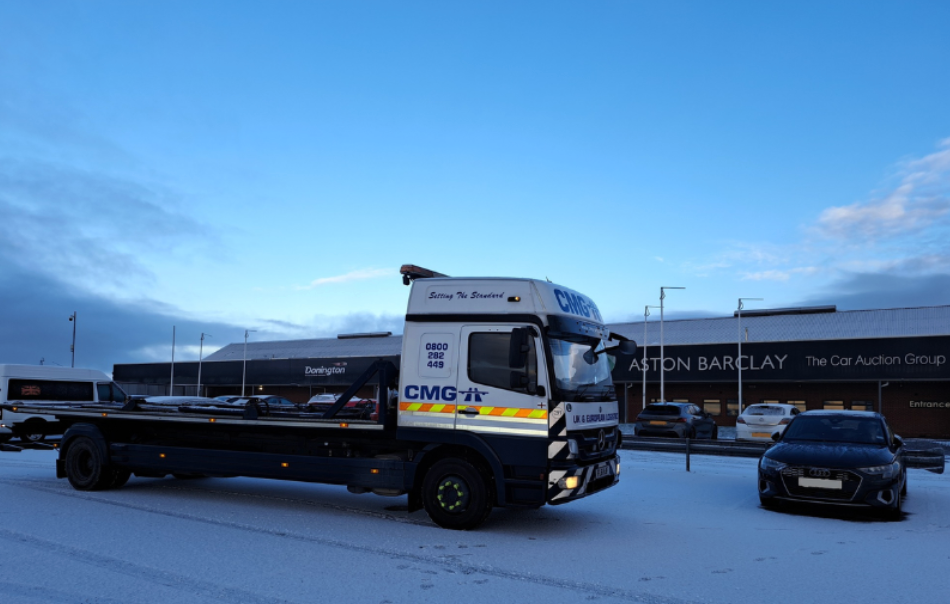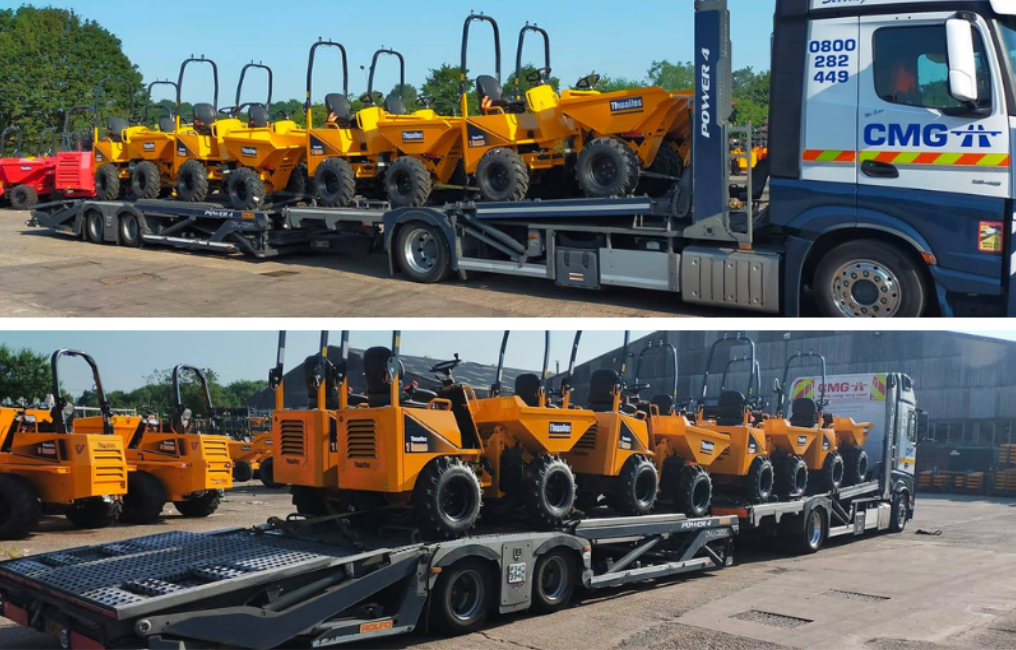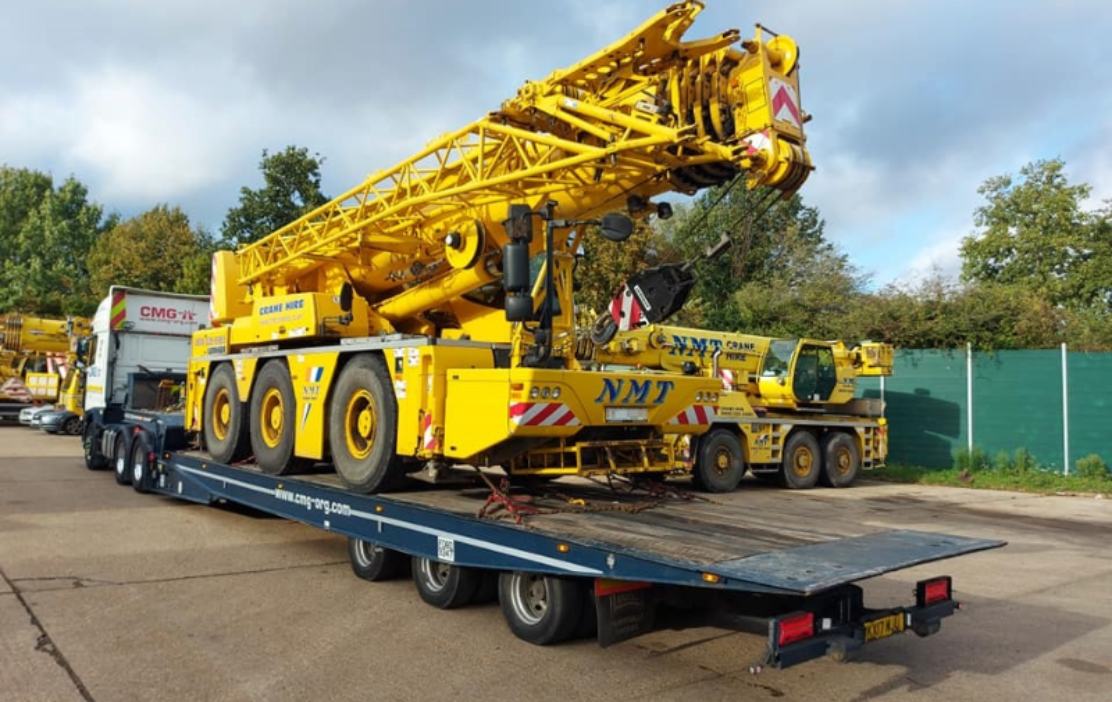Understanding the Differences between Low Loader types

What Are The Different Types of Low-Loader Trailers
Need to transport unusual loads and heavy hauls, such as construction equipment and plant and heavy machinery, without breaking the bank?
Look no further than low-loader trailers. Low loaders are specialised trailers used to transport heavy loads.
Low loader transport, operating throughout the UK and Europe, offers several advantages for moving heavy items. These versatile, budget-friendly trailers provide maximum flexibility for any moving situation requiring more height clearance for bridges and overhead structures and extra length for longer freight.
But there's more than one type of trailer out there.
In this blog post, let's explore different types of low loaders and their various features.
1. Standard Low-loader Trailers
The standard low loader trailer features a flatbed with two to three axles at the rear and is hydraulically driven.
The bed is typically flat with fold-down ramps at the rear and the axles allow the flatbed to be lowered to the ground for convenient loading and unloading, making it ideal for transporting vehicles.
Also, it can transport open-air commodities and industrial equipment that rolls.
Specifications
- Hydraulic brakes
- LED full road lighting
- Rope hooks
- Heavy duty heat treated hitch eye
- Choice of steel tread plate or softwood floor
- Additional features include a hardwood floor, drawbar skid, and steering axle
- This trailer comes in different weight categories - 5 tonnes, 6 tonnes, and 7 tonnes
- In general, the body width is about 8 feet 2 inches
2. A Fixed Swanneck Trailer
This type of low loader trailer is designed for extra-long freight. It has enough space to transport abnormally large equipment and oversized machinery.
A fixed swanneck is ideal for low loader transport, as it offers cost-effective and convenient rear loading.
These trailers combine solid and smooth designs with high-strength steel for dependability and ease of maintenance. In addition, the trailers have a short deck height and a high ground clearance.
Specifications
- Various deck styles, axle configurations, and optional equipment
- 2-3 axles, swanneck extensions, detachable rear frames, modular deck designs, I-beam and drop-side decks
- Load capacity in specialised trailers ranges from 25 to 150 tonnes
- Loading and unloading is easy because of the deck's low centre of gravity
3. An Extending Beam Trailer

If you need to move something very long, an extendable beam trailer can help.
It is the most efficient and cost-effective way to transport long, heavy loads such as steel structures, long steel pipes, precast concrete beams and long bridge beam sections.
Extendable beam trailers can haul up to 100 tonnes. This speciality helps by allowing the wheels or tracks to be straddled on either side of the trailer's beam bed, lowering the total height of the load.
In the case of low loader transport, these trailers help construct bridges by transporting launching girders from precast concrete bridge beam section yards to bridge construction sites.
Specifications
- Ideal for moving extra-long loads
- Capability to expand its “well” up to 15.6m in length
- Maximum height 2.9 metres
- Capable of hauling up to 100 tonnes
- The trailer set includes two trailer modules
4. Travelling Axle Trailer

The travelling axle trailer adds a new dimension to heavy vehicle and equipment transportation. The ultra-low clearance slope transition is standard on all trailers, allowing man lifts, forklifts and other challenging low clearance equipment to load effortlessly onto the upper deck.
The four-beam frame design is the foundation of a highly adaptable and robust piece of equipment that provides improved stability for loading heavy loads.
Specifications
- Capacity: 40 Tonnes (80,000 lbs)
- Deck rating: 50,000 lbs. in 10′
- Deck width: 102″
- Slope drop: 90°
- Loaded deck height: 37″
- Contains a hydraulic hook-up, winch, and valve body
5. 4-Axle Trailer
Unlike the 3-axle trailer, the 4-axle trailer is suitable for carrying more payload.
The added weight from the diversity of loading possibilities, two load angles, forward-placed hydraulic ramps and especially the fourth axle make this trailer the choice of recovery operators looking for the most adaptable trailer of this type for heavy-duty transporting.
Specifications
- Rigid axles
- Automatic slack adjusters
- Spring loaded parking brake
- Hydraulic landing legs
- Hardwood floor
- Superwinch h30p winch.
- Rear hydraulic ramp
- 8 reinforced sockets for telescopic expanders on each side
- 15.25M and 2.54M are the deck height and width, respectively
- Hydraulically powered pantograph mechanism drive allows the optimum inclination to load a vehicle.
These are the five standard trailers in low loader transport across the UK and Europe. Understanding the differences between low-loader types allows you to make the best decision for your hauling needs.
Remember, the specifications for each trailer may differ among different models.
Ultimately, the sole purpose is to haul an abnormal load. Therefore, transportation companies generally use low loaders for easy loading, unloading, and safe transport, the choice is yours.
Contact us and fill in our simple form for the best trailer for your haulage needs.
HEADOFFICE
CMG
PO Box 600,
Newport Pagnell,
Buckinghamshire,
England,
MK16 8YR
USEFUL LINKS
All Rights Reserved | CMG | Design & Build Kangaroo UK

